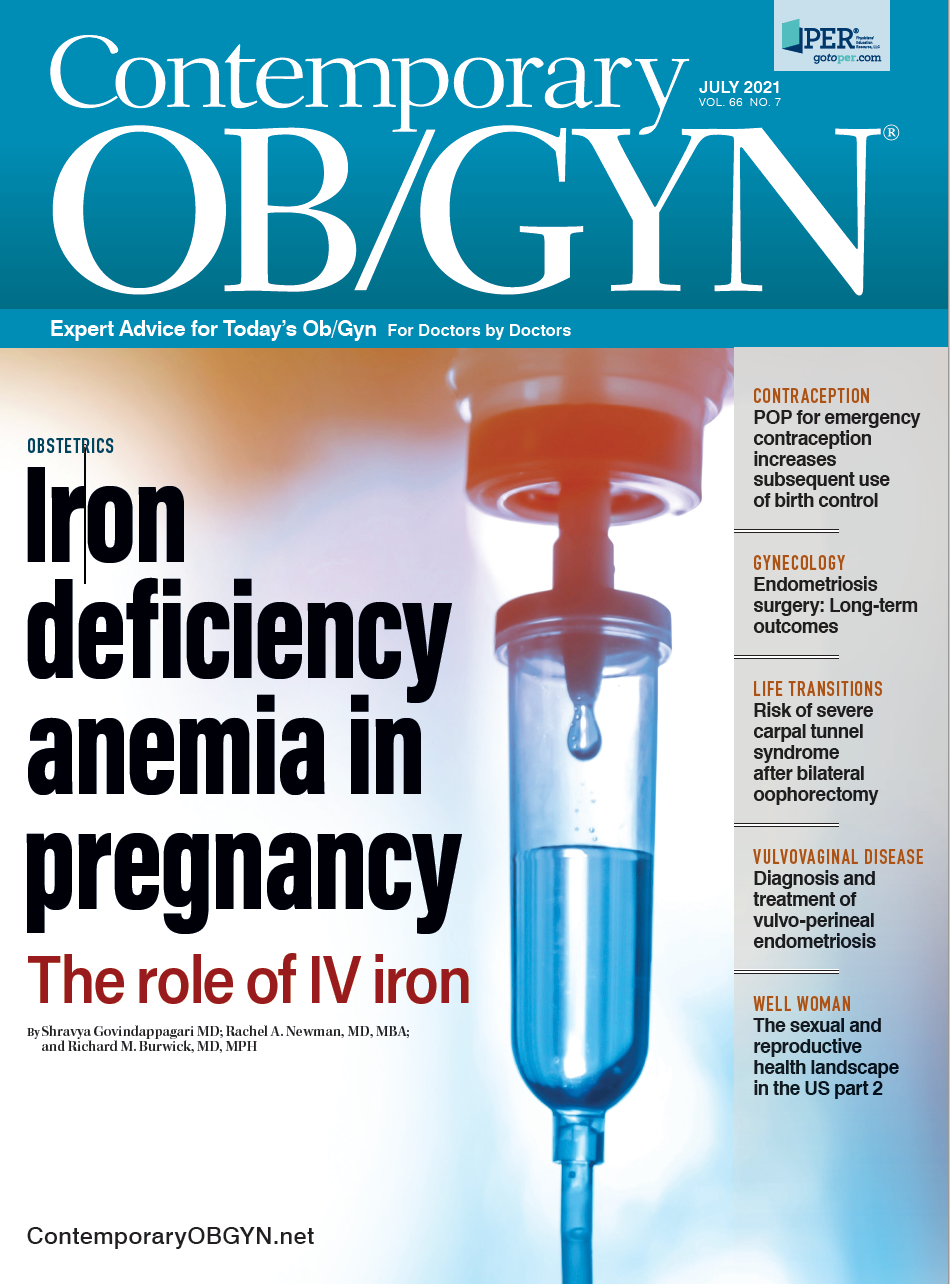Inside the July issue of Contemporary OB/GYN®
This month's cover story examines iron-deficiency anemia in pregnancy and the role of intravenous iron. Plus, an extreme case of fraud demonstrates the reach of federal statutes enacted to prevent and punish those who commit health care fraud.
Check back to read articles as they go live.
Steps to optimize maternal health
As practitioners, advocating for patients and managing common conditions to facilitate optimal pregnancy outcomes through preventative measures such as vaccination and addressing anemia have the potential for major impact.
Iron-deficiency anemia in pregnancy and the role of intravenous iron
Anemia in pregnancy should be treated due to its connection to adverse maternal and neonatal outcomes.
Severe carpal tunnel syndrome risk is now related to bilateral oophorectomy
The risk of de novo severe carpal tunnel syndrome (CTS) rises significantly after bilateral oophorectomy performed in premenopausal women, according to study findings in Menopause.
Health care fraud exposed
The FBI initiated an investigation of a solo ob-gyn physician in 2018. Ultimately, the United States DOJ led an indictment against the physician for submitting tens of thousands of fraudulent claims to various health care benefit programs, including Medicaid, Medicare, and TRICARE, for unnecessary, uninformed, and/or fraudulent gynecologic procedures.
Diagnosing and treating vulvo-perineal endometriosis
Diagnosis via clinical exam, perineal ultrasound, and pelvic MRI is advised.

A Legacy of Excellence: Reflecting on the Final Print Edition of Contemporary OB/GYN
April 25th 2025Marking the end of an era and the beginning of a new chapter, the final print edition of Contemporary OB/GYN celebrates over 50 years of evidence-based guidance and unwavering support for clinicians.
Read More
